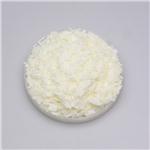Alcohol dehydrogenases (ADH) (EC 1.1.1.1) are a group of dehydrogenase enzymes that occur in many organisms and facilitate the interconversion between alcohols and aldehydes or ketones with the reduction of nicotinamide adenine dinucleotide (NAD+) to NADH. In humans and many other animals, they serve to break down alcohols that otherwise are toxic, and they also participate in generation of useful aldehyde, ketone, or alcohol groups during biosynthesis of various metabolites. In yeast, plants, and many bacteria, some alcohol dehydrogenases catalyze the opposite reaction as part of fermentation to ensure a constant supply of NAD+.
The alcohol dehydrogenases comprise a group of several isozymes that catalyse the oxidation of primary and secondary alcohols to aldehydes and ketones, respectively, and also can catalyse the reverse reaction.In mammals this is a redox (reduction/oxidation) reaction involving the coenzyme nicotinamide adenine dinucleotide (NAD+).
In biotransformation, alcohol dehydrogenases are often used for the synthesis of enantiomerically pure stereoisomers of chiral alcohols.Often, high chemo- and enantioselectivity can be achieved. In fuel cells, alcohol dehydrogenases can be used to catalyze the breakdown of fuel for an ethanol fuel cell.
Alcohol dehydrogenase catalyzes the reaction: RCH2OH +NAD+ ? RCHO + NADH + H+ It facilitates the interconversion between alcohols and aldehydes or ketones with the reduction of nicotinamide adenine dinucleotide (NAD+ to NADH). In biotransformation, alcohol dehydrogenases are often used for the synthesis of enantiomerically pure stereoisomers of chiral alcohols.
This product has been enhanced for energy efficiency and waste prevention when used in fuel cell research.
Alcohol dehydrogenase catalyzes the oxidative conversion of alcohol into aldehyde. It has a homodimeric structure with a co-enzyme binding domain at the C-terminal and an N-terminal catalytic domain. The active site is located at the interdomain cleft. Binding of NAD+ in the active site causes conformational changes which create the binding site for the alcohol substrate.


